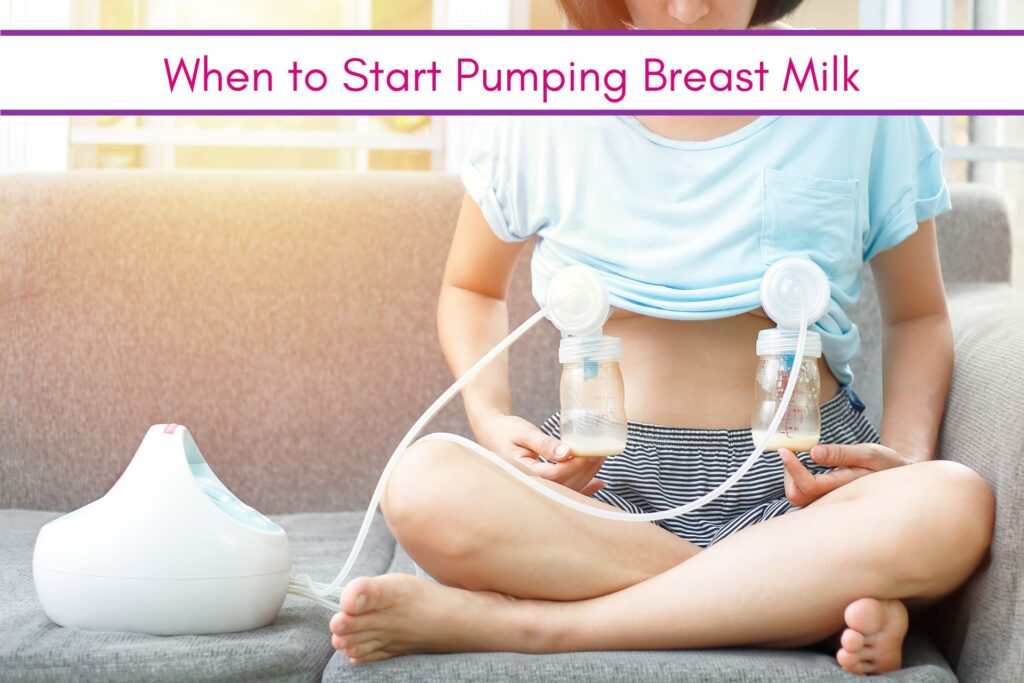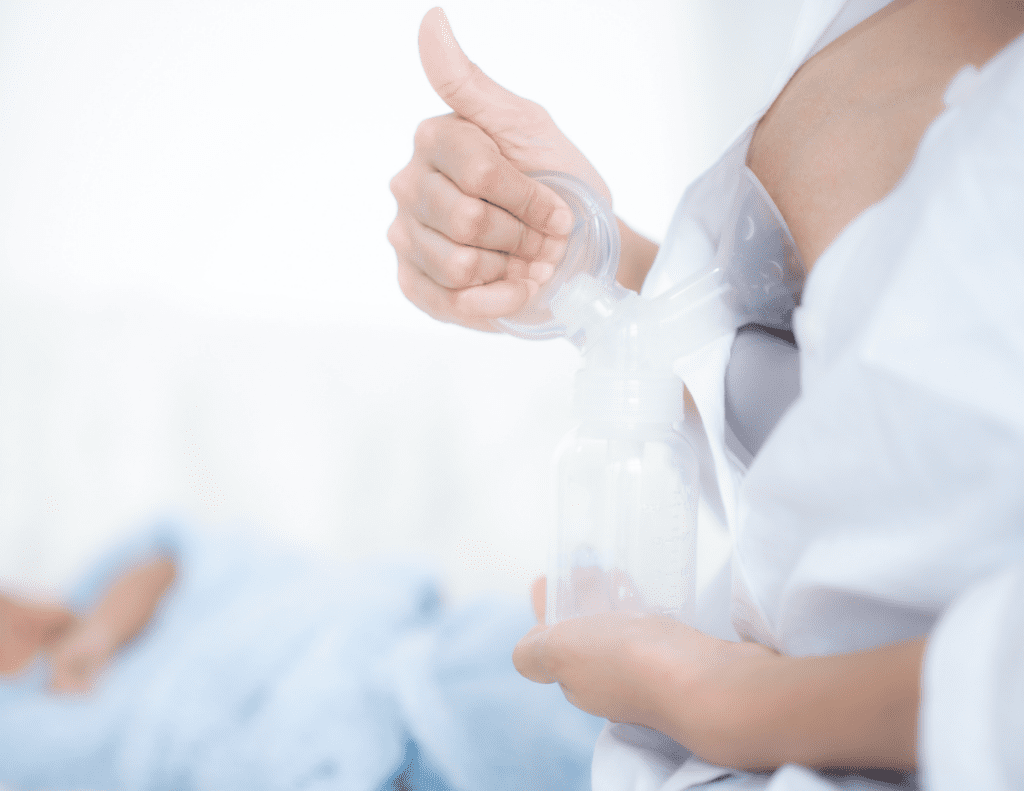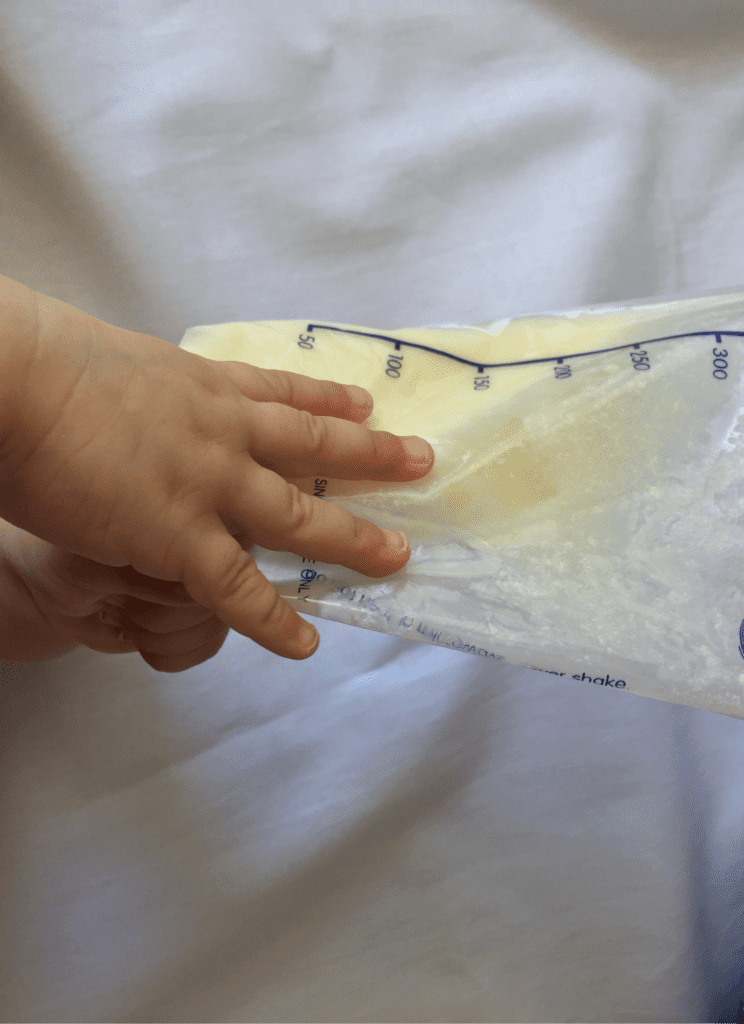As a new mom that wants to breastfeed, there are lots of questions about how and when to start pumping breast milk. Here is what you need to know about pumping breastmilk!

Advice for Nursing Moms on When to Start Pumping Breast Milk
Breastfeeding is highly recommended to feed your baby in the best way possible. Your child can receive much-needed nutrients from breast milk. This is why breast milk should be given to babies to help nurture and enhance their growth and development naturally.
But then again, some moms may find it a little bit challenging to breastfeed their babies when they return to their work. They might not be at home during the day so they won’t be able to be around to feed their baby. If this is the case, pumping for breast milk and storing it in the fridge is the best option you’ve got.
Question is, when’s the right time for you to start pumping breast milk? And what are the things you have to know and prepare for when breast pumping?
This post answers these two questions – and more – so read along!
Why Moms Choose to Pump for Breast Milk
Not all moms are stay-at-home moms. There are working moms who can’t really feed their little ones on demand 24/7. If you wish to keep providing your little one with breastmilk, a practical solution for that is by using a breast pump. You can have a sufficient supply of milk for your baby even when you’re not around.
Moms consider pumping breast milk for several other reasons aside from their demanding job that keeps them away from their babies. For instance, pumping is ideal for babies who are not capable of feeding directly from their mothers’ breasts.
As for other moms, they may be experiencing pain in their breasts or mastitis, and they want to drain the breasts to alleviate the pain. And the most common reason is they want to store a good amount of breastmilk for their child when they’re at work. The sitter or family member can simply feed the baby with as much milk as possible that you’ve prepared and pumped ahead of time!

RELATED ARTICLE: 10 Tips to Breastfeed in Public
Preparing for Pumping Breast Milk
Now that you’ve established the reasons why you want to pump for breast milk, let’s proceed to the how’s. How do you prepare for breast milk pumping? And most importantly, how soon can you do it?
If you have a healthy and full-term newborn, it is okay to wait for a few weeks before you begin pumping. But it’s a lot different with a weak, ill, or pre-term baby. It is best that you begin pumping soon after you give birth. Ideally, you can pump within an hour or six hours after delivery.
RELATED ARTICLE: My Natural Childbirth Experience With Our Last Baby
For moms who are primarily breastfeeding their babies, you should pump for milk in the morning. It is common for a number of moms to get more milk first thing when they wake in the morning, so it is great to do it as this time of the day instead of waiting longer.
You can also do the pumping in between breastfeeding sessions. Perhaps half an hour to an hour after or before nursing, you can start pumping. This way, your baby will still have a good amount of milk left for the next feeding time.
There are some babies who prefer to drink milk right after you pump, so just let them do so! Other babies are more patient and they like to wait and feed a little longer so they can be more satisfied with the milk they get.
When pumping, it is best to do this about 8 to 10 times within a 24-hour period. Most moms can collect as much as 35 ounces during this length of time. This is the full milk production, and upon reaching it, you have to keep a schedule to ensure consistency.
But it is true that babies and moms are different. There are differences in schedules and preferences during the time of the day to pump. So it is better that you plan the sessions around depending on what is convenient for you and your little one.

How to Pump for Best Results
It can be quite a daunting process to pump. But if you become more familiar with the process, it will become much easier and more efficient for you to do.
Here are our top tips on how to pump and ensure great success:
- Be informed. Do some research on breast pumping basics. There are videos or training that can help you learn the ropes much easier.
- The ambiance is everything. If you’re less stressed and you feel more relaxed, you will feel more at ease with pumping. Choose a nice and quiet area for you to sit and pump.
- Pumping might take a bit long, so be sure to have something to nibble while you pump. A wholesome snack such as fruit or nuts would be perfect.
- Prepare your pump. Get your electric breast pump ready and check the batteries to be sure they’re working. You should also keep your hands clean before you begin pumping.
- Get the pump kit assembled and make sure the flanges are positioned correctly over the breasts. The right fit of the flange is very important. The flange opening is for your nipples, and it should create a tight air seal.
- Double or single pumping? In case you want to double pump, you should position both flanges correctly and make adjustments as needed.
- Once everything is all set, turn the pump on and begin.
- Begin with a high speed and a low suction and adjust to a medium speed once you have observed the milk flow. By then, you can increase slowly the suction speed depending on what feels comfortable to you.
Pumping at Work Tips
- Did you know that employers are required to provide a space and time for you to pump? Check out what the law requires in your state.
- You should pump every 3 hours. Block out time to pump.
- Find a place to store your breastmilk
- Drink water and have a snack
- Keep things clean – breast pump, baggies for storage and where you store
These are just a few simple pumping at work tips that will put you on the road to success!

How to Store Breast Milk
Do you know how to store breast milk once you have pumped? It’s important to know how to store breast milk safely so that you baby can enjoy it later on. You don’t want all that breast milk “liquid gold” to go down the drain.
RELATED ARTICLE: How To Store Breastmilk Safely
Breast Milk Donation
Do you have a surplus of breast milk in your freezer? Did you know that there are organizations that will accept your breast milk donation? I have a friend donate her breastmilk and she absolutely loved the experience. In her situation, the organization mailed her a cooler that she would fill up biweekly with her extra stored breastmilk. I know she blessed many lives!
Who will accept your breast milk donation? In some communities, there is a milk bank that will accept donations. Hospitals and Food Banks will know where there is a local milk bank in your community.
Who benefits from your breast milk donation? Pre-term infants, medically fragile infants, babies that can’t tolerate formula, and other babies.
Is it safe? Yes. Each woman who would like to donate provides a health history and blood test. If all is okay with mom, then the breast milk donation is screened. If everything is good, then the organization accepts the breast milk donation and the milk is processed and stored for infants in need.
Here is an organization that accepts your breast milk donation. Read more about what they do and the process to help babies benefit from your breast milk donation.
Pump for Breast Milk With Better Progress
Practice makes perfect! You’ll get breast milk pumping all dialed in the more you do it. Eventually, you will find it is easier and quicker to do, so just keep practicing and follow these simple steps all the time.
So keep giving your child breastmilk that will support her growth and development while maintaining the strong bond between the two of you. Pump with success with the right tools and the right steps that I have shared with you today. 🙂
- Need more tips for breastfeeding success? Try this breastfeeding course.
- Do you need more guidance with pumping breastmilk? Try this pumping course!

Michele Tripple is a renowned author and expert in the fields of parenting, relationships, and personal development. With her degree in marriage and family studies, her experience as a Family Life Educator, and over a decade of experience as a professional writer, Michele has authored books that provide practical advice and insights into improving family dynamics and personal growth. Her work is celebrated for its blend of research-driven information and relatable, real-world applications. Michele has been a keynote speaker at conferences and has contributed to numerous publications and media outlets, solidifying her reputation as an authoritative voice in her field and helping families build relationships.

Such a helpful article! When I had my daughter it took awhile for my milk to come in. Pumping really helped get everything flowing lol. I also went back to work so definitely needed it then!